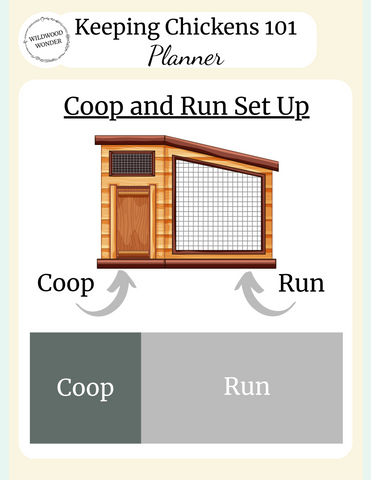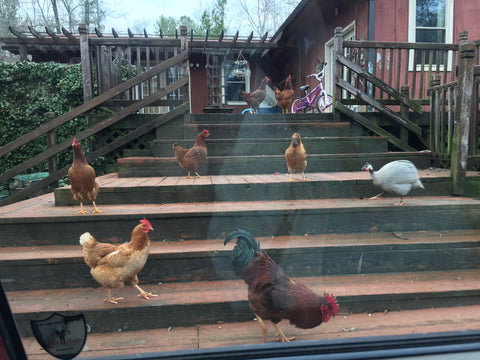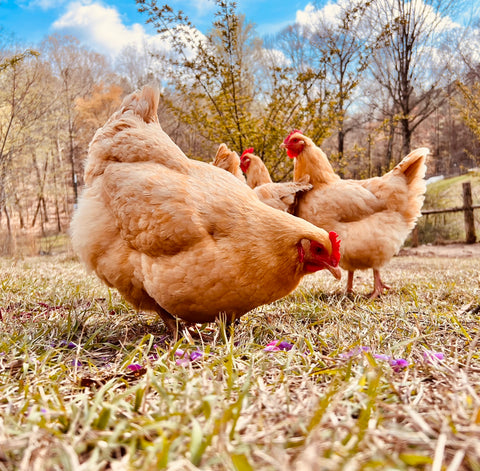Part 4: Keeping Chickens 101, Chicken Coop
Keeping Chickens Part 4: Getting Pullets & Adult Birds
Acquiring pullets and adult chickens might be more to your liking than raising a bunch of baby chicks. They do have their advantages over tiny fluff balls. So, let's explore all you need to know about getting pullets and full-grown birds!

Review of chicken terms:
Cockerel- Male that is under a year old
Pullet - Female that is under a year old
Juvenile- A young male or female bird
Cock- Male that is a year or older
Hen- A female that is a year or older
Rooster- A male chicken (includes cock and cockerel)
Where to purchase your chickens:
1. Chicken Hatcheries
There are a few hatcheries that sell pullets. They all have different ages that range in the pullet category. Each one has different breeds that they sell as pullets too.
My recent up-to-date research found pullets sold from $25 to $30 apiece. You get my recommended number of five pullets; this equals $125 on the cheaper end.
Pullets might be worth it if you count the cost of getting all the supplies needed for baby chicks. But I still need to add shipping.
Shipping was averaging $350 - $375 for five birds through USPS, so shipping is three times the cost of the actual birds. So, in the end, it was $500 for five chickens!
So, as you can see, having pullets shipped to you is not financially worth it, leading us to the next place you can find them.
2. Local hatcheries, farms, and homesteads
Y'all have probably figured out that I am a huge supporter of supporting local farms and homesteads. As mentioned, you can find high-quality food, animals, and products from your local growers.
Your local farmer and homesteader must give you a high-quality product because, as we all know, word of mouth is the best form of advertising. If I don't provide someone with the best chicks, they will surely tell their friends that my chicks are not the best quality.
Local is also your best resource for advice on raising chickens in your area and climate. They will also have tips to make your life easier as you start your backyard flock. Ask around at work and on social media to see who your local chick, pullet, and hen providers might be.
Choose someone who is highly recommended and trusted. The farmer will surely give you the best birds and a ton of advice. Don't be scared to ask questions!
Sometimes homesteaders and farmers have raised chickens for so long that we, I sometimes do, forget to mention everything or think you might already know. Even if you have questions after you get home, call or message them!

Getting a Healthy Pullet or Hen:
Selecting a healthy bird is the same as choosing a healthy chick.
- Clear Eyes
- Clear Beak
- Healthy Feathers
- Strong legs
- Good personality
Getting Your Chickens Home:
The person you are getting your birds from should have a box to transport them in or suggest you bring a pet carrier.
Housing for Your Chickens:
You must have your coop (house for your chickens) built and ready before bringing pullets and adult chickens home.
They will need to reestablish their "home." It is recommended that you shut your chickens in their coop, including a fenced-in outside area called a Run, for at least three to five days. Your new pullets/hen should associate the new enclosure as their home.
I have heard first-hand accounts of people bringing new birds home, letting them out of the pet carrier, and all the birds running to the woods, never to be seen again.
Run & Coop:
Coops are essential for your flock's protection from the weather, and hens prefer to lay eggs in a private spot inside called a nesting box. But, the outside enclosers (run) space is where you want to allocate more space—chickens like being outside during the day, walking around, and getting sun and fresh air.

Run:
A "run" is a fenced-in area where your chickens can walk around freely while being protected from predators, and it keeps them out of your garden and off your porch. You can not hide fresh new seedlings and plants from those skilled foragers! I've learned the hard way.


Things you will want in your run:
- The run is also where you will want to keep the chicken's food and water. So, one area of the run must have a roof overhead to keep the food from getting wet. It will also give your flock a place to escape the rain.
- A door big enough for you to enter the run for feeding and cleaning.
- Chickens are known for "cratching" and creating holes in the dirt to lay in, so you may want some hay for the bottom of your run.
- You can also add a "dust bath" area for your chickens to fluff in. Dust baths help keep fleas and mites out of their feathers.
We have a coop with a run attached for predator pressure, and they are also in a fenced-in area. Our "Chicken Orchard" was designed to give our chickens a protected free-ranging space. It has 6ft+ fencing around, which keeps them in and predators out.
Also, we use their foraging skills to help keep bugs off our fruit trees. They also eat fallen/ rotten fruit off the ground, which keeps the orchard clean of disease and pests. Chickens are omnivores. They eat bugs, mice, snakes, plants, flowers, and fruit.
Yes, occasionally, they will get a hold of a good piece of fruit. They are excellent jumpers too. But it's a good trade for the clean-up crew. They also help to fertilize the orchard. As they walk and eat, they also poop. Feed themselves, clean up, and fertilize. I call that a win-win!

Coop:
Your flock coop will be the most expensive investment in your chicken venture, mainly because I encourage you to invest in a well-made and large enough coop.
If you or you have someone good at building, doing quality work, and can DIY, that is the route I would take first. We have had our custom-built one for around 8yrs now. We have moved it once, and I will be repainting it and patching the wire for the first time this year. It is worth the money to have a well-built coop to your specifications than to buy the cute one at the local farm store.
The ones at the farm store and amazon tend to look good, but if you see them in person, you can tell they are made from materials that will only last for a while. A lot of them need to be bigger. I recommend a flock of at least five, but those houses barely fit two hens.
So, what size coop do you need?
First, to determine the size coop you need, it is best to determine how much roosting area you need.
Roosts:
Chickens prefer to sit and sleep on a roost. A roost is a long, rounded pole or stick they can comfortably wrap their feet around. The roost mimics what their natural sleeping area, a tree branch, would feel like.
Here are some general guidelines for how much space a roosting area should be:
- Roosts (standard chickens breeds): 8" per chicken
- Roosts (heavy chicken breeds): 12" per chicken, no more than 1-2 feet high
Most coops have one long roosting pole, but some have two shorter ones across from each other to save space.
Nesting Boxes
Nesting boxes are where your hens will lay their eggs. They feel safe and protected there. We have five nesting boxes, and our hens will only use two. The other three are useless, so 1-2 boxes are adequate.
- Nesting Boxes (standard chicken breeds): 12" x 12" x 18", one nesting box per 4 to 5 hens
- Nesting Boxes (heavy chicken breeds): 14" x 14" x 20", one nesting box per 4 to 5 hens

Your skilled carpenter should be able to come up with the perfect size and dimensions for your coop.
Other things to remember:
- A coop door large enough for you to enter or able to clean out with a pitchfork. An add hay. It also needs to be locked when not opened.
- You will need a small door for chickens to enter and leave throughout the day.
- A ramp is needed for chickens to walk up to their coop entrance.
- Nesting boxes that can be opened outside are easy to reach and clean.

You can also find local carpenters building coops for new chicken owners around this time of year. There are also endless books and plans online for all different types of chicken coops. Just make sure you keep your guidelines in mind.
If you haven't grabbed your FREE downloadable/printable Keeping Chickens 101 Planner make sure to get it HERE!
If you end up with an awesome coop you love, please share a picture in the comments! We would love for people to see ideas and discover what worked for others!
I will also update and add coop ideas to my Pinterest board, Cottage Chickens! Just click the link to go straight to it!
Thanks for stopping by the Wildwood Wonder Cottage Homestead!

